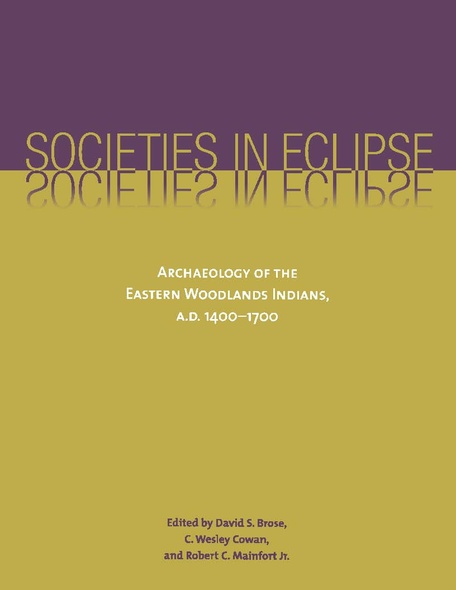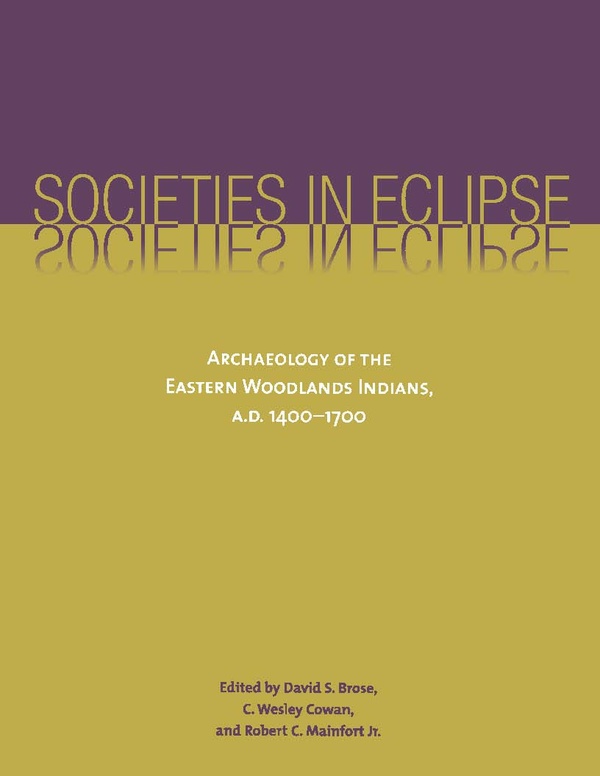Societies in Eclipse
Archaeology of the Eastern Woodlands Indians, A.D. 1400-1700
After establishing the distribution of prehistoric and historic populations from the northeastern Appalachian forests to the southern trans-Mississippian prairies, the contributors consider the archaeological and cultural record of several specific groups, including Mohawk and Onondaga, Monacan, Coosa, and Calusa. For each, they present new evidence of cultural changes prior to European contact, including populations movements triggered by the Little Ice Age (AD 1550–1770), shifting exchange and warfare networks, geological restriction of effective maize subsistence, and use of empty hunting territories as buffers between politically unstable neighbors. The contributors also trace European influences, including the devastation caused by European-introduced epidemics and the paths of European trade goods that transformed existing Native American-exchange networks.
While the profound effects of European explorers, missionaries, and traders on Eastern Woodlands tribes cannot be denied, the archaeological evidence suggests that several indigenous societies were already in the process of redefinition prior to European contact. The essays gathered here show that, whether formed in response to natural or human forces, cultural change may be traced through archaeological artifacts, which play a critical role in answering current questions regarding cultural persistence.
The hemispheric collision set in motion by the 1492 voyage of Christopher Columbus created a dynamic new world, one bringing both tribulations and challenges to the American Indians of the eastern United States. From the Great Lakes to Florida, Indian societies sought to adjust to disease-caused demographic disasters and the European presence even as they dealt with new ideas and took advantage of new economic ventures . . . In this well-documented volume, a host of scholars examine the evidence for these changes within fourteen eastern Woodlands Indian areas. Analyzing archaeological evidence from late pre-Columbian time to 1700, they provide an informative perspective on the impact of the European settlement on the histories of American Indians.’
—Jerald T. Milanich, author of Laboring in the Fields of the Lord: Spanish Missions and Southeastern Indians
David S. Brose, Director of Cranbrook Institute of Science and founding editor of The Mid-Continental Journal of Archaeology, is author, editor, or co-editor of many professional works, including The 1838–42 U.S. Exploring Expedition and American Science in the Age of Sail, and the National Historic Landmark Study, Earliest Americans of the Eastern United States.
C. Wesley Cowan is a retired anthropologist and museum curator, founder and owner of Cowan's Auctions, Inc., a star on the PBS series, History Detectives,” and a frequent appraiser on Antiques Roadshow.
Robert C. Mainfort Jr. is an archaeologist with the Arkansas Archeological Survey in Fayetteville, Professor of Anthropology at the University of Arkansas, and co-editor of his latest volume, Woodland Period Systematics in the Middle Ohio Valley.





